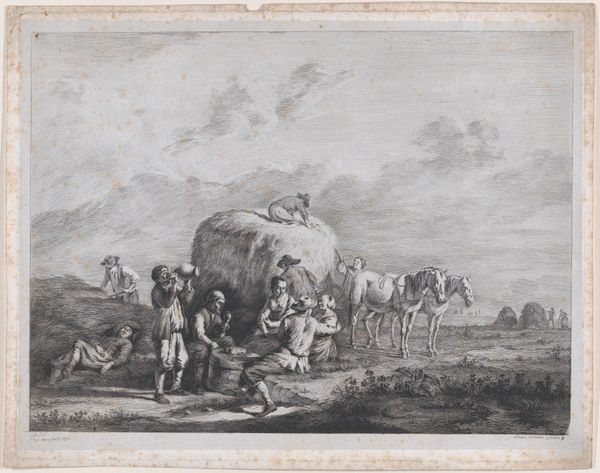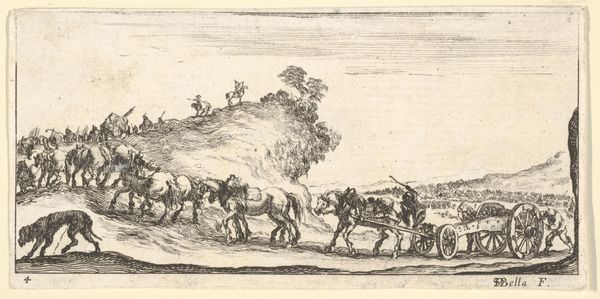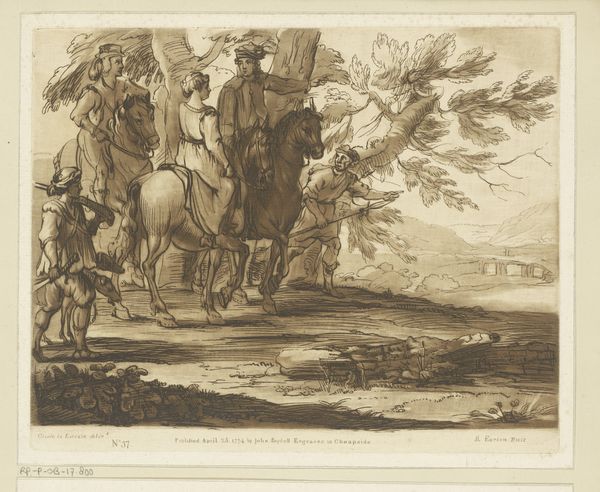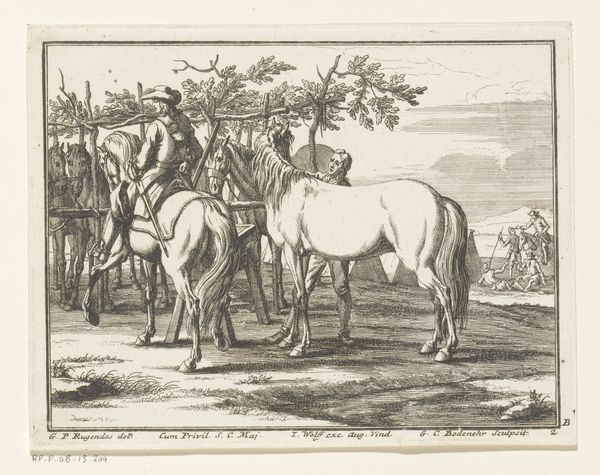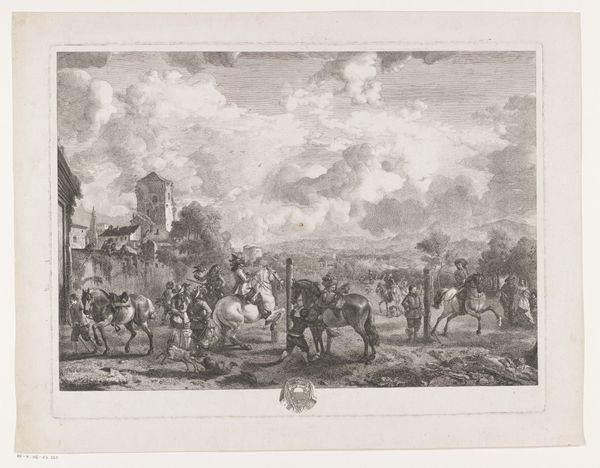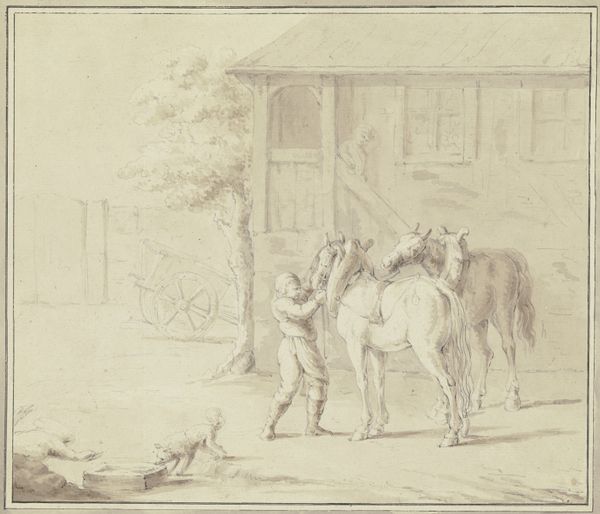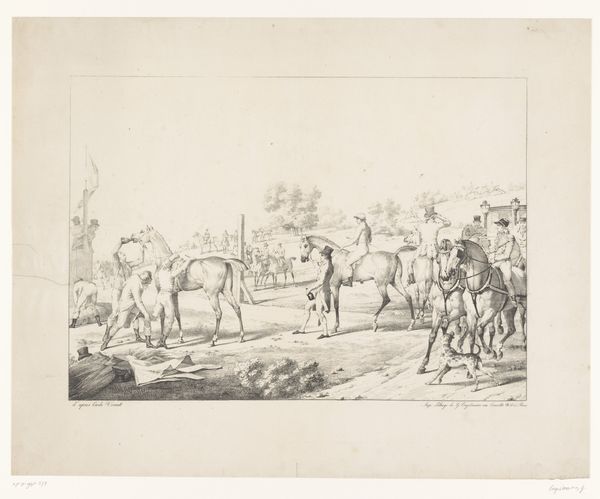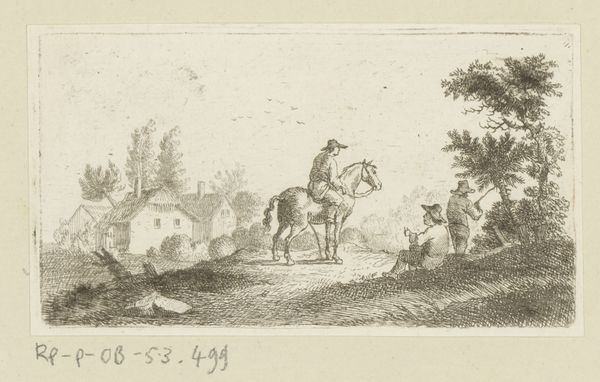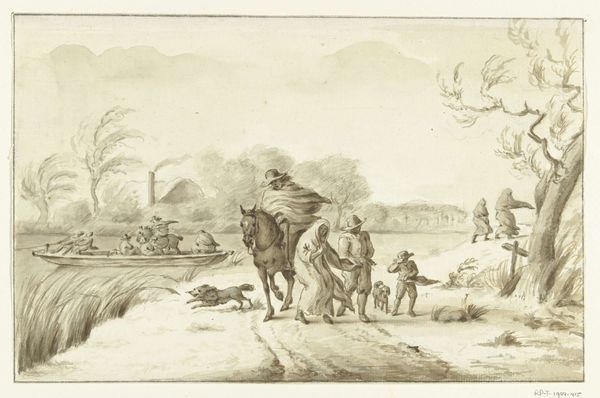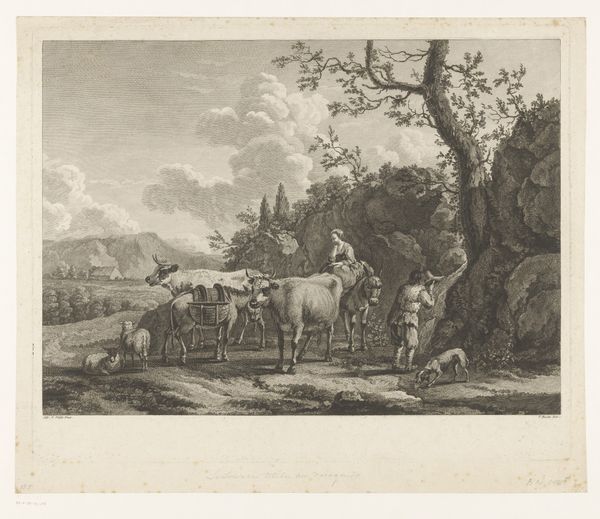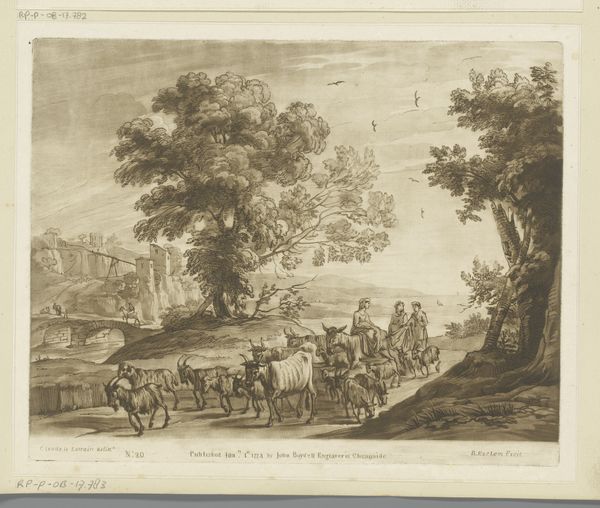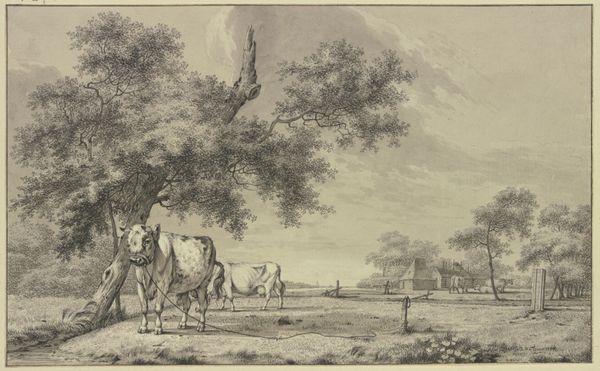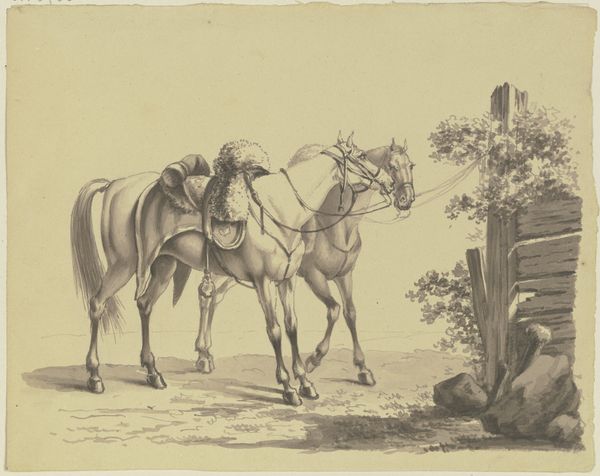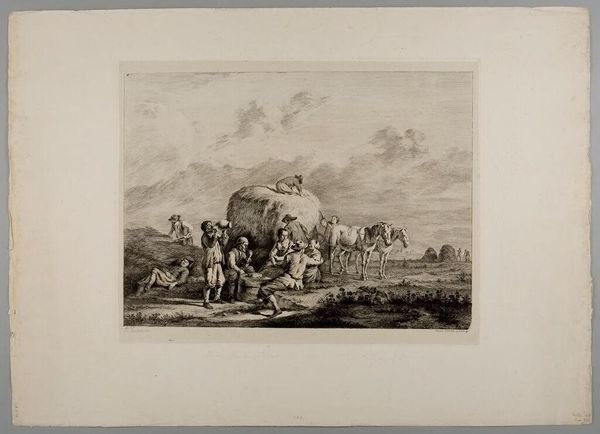
print, engraving
#
baroque
# print
#
landscape
#
figuration
#
horse
#
line
#
genre-painting
#
engraving
Dimensions: height 286 mm, width 408 mm
Copyright: Rijks Museum: Open Domain
Curator: Here in gallery 21 we have a print called "Groep paarden voor een staldeur," or "Group of horses in front of a stable door," created by Jean Pesne somewhere between 1666 and 1695. It’s an engraving. Editor: Immediately I'm struck by the energy of the horses, the lightness of the lines. It’s as though we’ve caught them in a fleeting moment, almost like a photograph, even though it's a printed image. You can practically feel the movement! Curator: Movement is certainly central. Notice the prominent placement of horses across different registers—near the barn and within the landscape, but have you considered what horses signify here, beyond representing dynamic figures? Think of their symbolic connections to aristocracy and labor. The Dutch Golden Age certainly knew the power, status, and cultural cachet that noble steeds connoted. Editor: Of course. But what's intriguing is how Pesne's use of line brings a rather delicate feel to rendering labor. The engraving, given its means of production and consumption through prints, democratized access to the image of aristocratic wealth in a time defined by economic upheaval. Was Pesne commenting on material anxieties and new accessibility through the production of this engraving? Curator: That's a fascinating interpretation, framing the print's accessibility against the backdrop of its content. The presence of the stable hints at something constant; it creates a pictorial and iconographic space where animals meet industry. We may not agree entirely on the class critique inherent in the piece, but one can hardly ignore the symbolic language throughout the composition. And that odd animal in the sky above...a Fox perhaps? It seems like Pesne tried to create an enduring iconographic vocabulary to suggest meanings and invite interpretation for ages to come. Editor: I can't argue with its lasting resonance! Considering this baroque landscape of animals both working and running free is quite a beautiful feat, rendered as lines on a treated plate pressed and multiplied by human effort, available to a new public! The sheer number of lines required must have taken weeks. Curator: And after all of this discussion, both in the 17th century and today, we still contemplate the enduring mystery held in these symbols and etched marks.
Comments
No comments
Be the first to comment and join the conversation on the ultimate creative platform.
